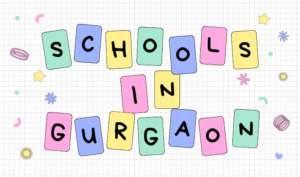Our family enjoys Disney and Marvel productions, subscribing to Disney Plus (Japan) and enjoying a wide range of content from animation to movies. Interestingly, Disney has an animated series set in India!
The series is called “Mira, Royal Detective.”
Even before our assignment to India was decided, our children were already watching this anime. Perhaps because of watching the anime, when we told the children about our upcoming assignment to India, they remembered the world of Mira and responded positively, saying, “Oh, there! I want to go there.”
It takes courage for children to go to an unknown foreign country, and it can be stressful. That’s why I think that glimpsing India through the anime our children loved before the assignment became the best introduction to understanding India, in hindsight.
Today, I’d like to share my personal insights on how the anime “Mira, Royal Detective” introduces Indian culture and environment.
The Story of “Mira, Royal Detective“
As the newly appointed royal detective to the Indian-inspired land of Jalpur, the brave and resourceful Mira travels throughout the kingdom helping royals and townspeople alike! With the help of her friend, Prince Neel, her cousin, Priya, and her mongoose sidekicks, Mikku and Chikku, Mira uses her unique lens to investigate each case that comes her way!
Disney Junior (YouTube)
By the way, each episode is 25 minutes long and contains two stories. Although there seems to be a Season 2, it is only available up to Season 1 on Japan’s Disney Plus, comprising a total of 25 episodes.
What Mira Taught Us
Bollywood Music and Dance
There’s a dance that Mira always does when she starts solving a mystery. She dances while singing, “We’re on the case, We’re on the case,” and the music and rhythm of it are addictive. This addictive dance routine appears every time, so even children quickly pick it up and hum along.
As it’s billed as an animation filled with song and dance in the Bollywood style, besides Mira’s “mystery-solving dance,” there are many other dance scenes. They often involve quite a large group of people dancing together, making us quite memorable. The costumes are colorful and lovely, and even adults can enjoy them.
Traditional Indian Elements
The anime includes many things unique to India. For example…
- Pallanguzhi, a traditional game from South India. It seems to be one of the Mancala games, but I haven’t figured out what sets it apart from regular Mancala yet. Mancala itself might not be well-known in Japan, but it’s an entertaining board game enjoyed by people of all ages, and personally, I love it.
- Dafli, an Indian tambourine. Mira and her friends often dance while carrying Dafli. Also, the Sitar, an Indian string instrument. Its shape is similar to the Japanese shamisen, perhaps? Sitars are sometimes hung on the walls or played during dance scenes. They appear quite frequently in the anime.
- Diya, an oil lamp. There’s an episode themed around Diwali, where colorful and beautiful Diyas are featured.
These elements are woven into the story.
Coexistence with Animals
The protagonist, Mira, solves mysteries with two talking mongooses, but besides them, many animals naturally appear. The key point is how seamlessly they blend into the scenery—chickens, goats, and cows are part of the natural environment. It depicts the coexistence of humans and animals in India. Strangely, dogs don’t seem to make an appearance (I think…).
Modes of Transport and Environment
Since the setting is a local town, backgrounds often feature grasslands or sandy areas. People walk or ride rickshaws, mostly on sandy paths.
Rickshaws and bicycles appear in every episode. Mira often wears a helmet and is seen driving a rickshaw. There are also carts with wheels, similar to covered wagons, that make frequent appearances.
Clothing and Accessories
All characters wear traditional attire like Saris, Punjabi dresses, and Kurtas. The colors are vibrant, the designs intricate, making them truly beautiful. Personally, I think the beauty of the clothing is one of the anime’s greatest charms. And the accessories are equally lovely. Many adult women wear lots of jewelry.
Items, Interiors, and Art
The story usually revolves around things disappearing. Dresses, wooden boxes, patchwork… Mira’s role is to find out why they disappeared and solve the mystery. The decorations and designs of these “vanished items,” which are key to the story, are always exceptionally beautiful.
Apart from those, buildings, rickshaws, interior decorations inside homes, all have beautiful embellishments. Truly impressive attention to detail from Disney.
A Side Note… Origin of the Blog Name
In the story, Mira often says “Chalo Chalo!” It’s a phrase whose meaning even children who don’t understand it seem to enjoy, often repeating it with enthusiasm.
When it was decided that we would be relocating to India, I recalled Mira’s joyful exclamations of “Chalo Chalo!” and wondered what it meant. Upon investigation, I discovered that it means “Let’s go!” The sound and the meaning were both delightful, evoking a sense of excitement… so I decided to make it the name of my blog.
While watching this anime doesn’t provide a comprehensive understanding of India, at least my children now think, “India seems fun.” Thank you, Disney Channel.
Since I showed all the episodes in Japanese, I’m currently thinking that if I show them in English next, it might also help with English learning.









